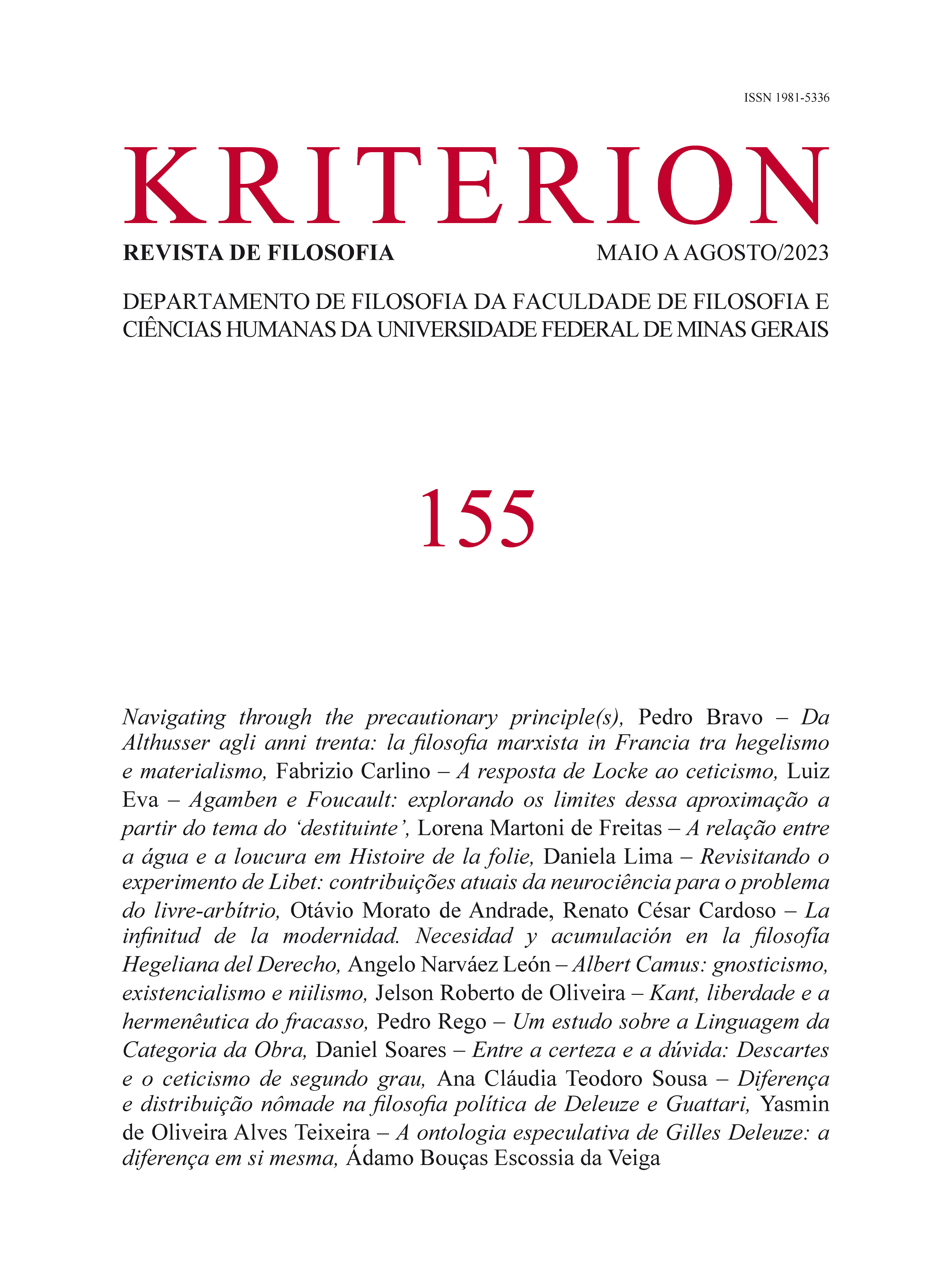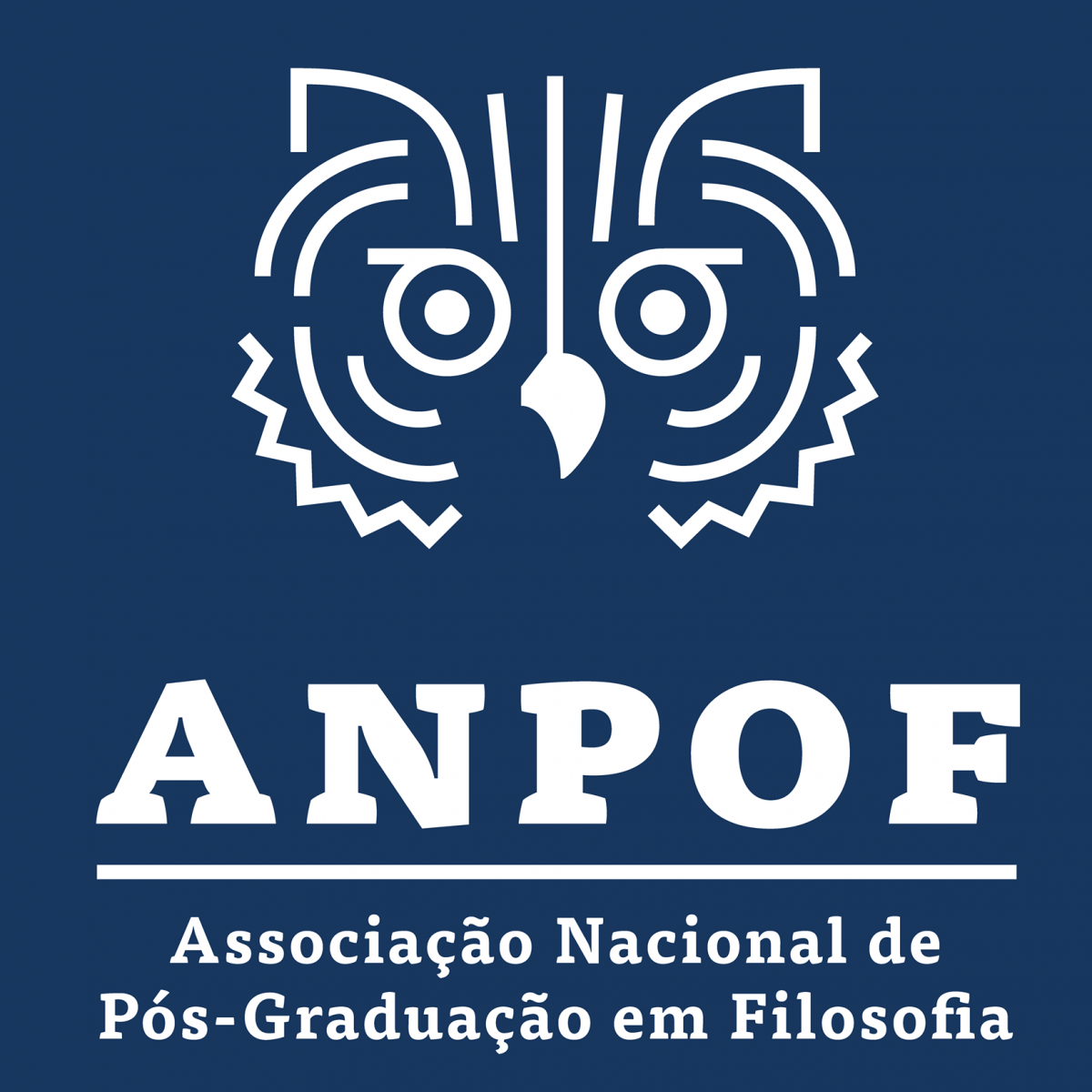NAVIGATING THROUGH THE PRECAUTIONARY PRINCIPLE(S)
Palabras clave:
Precautionary Principle, Philosophy of Science, Environmental EthicsResumen
This paper aims to map the different theoretical options
related to the Precautionary Principle (PP). Great part of the literature on it can be systematized by answering to three different questions: is there a basic structure in the PP? If so, in which interpretation of the PP does this structure express itself? Finally, are its damage or knowledge conditions fixed or adjustable? The first question separates realist from non-realist approaches. The second question allows us to discriminate monist, dualist, or pluralist positions in relation to the three interpretations of the PP: decision rule, procedural requirement, or epistemic rule. Finally, the third question distinguishes rigid from non-rigid formulations of the principle. Based on this mapping, one can not only navigate through the different formulations of the PP present both in official documents and in specialized literature, but also deflect some of its common objections, and understand Hans Jonas’ eventual connection with PP. Notwithstanding, this mapping does not capture other important themes attached to PP, which motivates a final distinction between narrow and broader forms of PP.
Descargas
Citas
AHTEENSUU, M.; SANDIN, P. “The Precautionary Principle”. In: S. Roeser et al. (eds.). 2012.
AVEN, T. “Misconceptions of Risk”. Chichester, UK: John Wiley & Sons, 2010.
BIRD, A.; LADYMAN, J. (eds.). “Arguing About Science”. Nova York: Routledge, 2013
BIRCH, J. “Applying the precautionary principle to pandemics”. Preprint. 2021. Available at: https://philpapers.org/rec/BIRATP. Last access on March 30, 2022.
BOEHMER-CHRISTIANSEN, S. “The precautionary principle in Germany: enabling government”. In: T. O’Riordan; J. Cameron (eds.). 1994.
BOYER-KASSEM, T. “Is the Precautionary Principle Really Incoherent?” Risk Analysis, 37, 11, 2017a, pp. 2026–2034.
______. “The Precautionary Principle Has Not Been Shown to Be Incoherent: A Reply to Peterson: Response”. Risk Analysis, 37, 11, 2017b, pp. 2039–2040.
BRAVO DE SOUZA, P. “Agnotologia e o Princípio da Precaução”. Principia: an international journal of epistemology, 25, 2, 2021, pp. 289–304.
BRAVO DE SOUZA, P., “Communication from the Commission of the European Communities on the Precautionary Principle”. Brussels: Commission of the European Communities, 2000.
BROWNSWORD, R., SCOTFORD, E., YEUNG, K. (eds.). “The Oxford Handbook of Law, Regulation and Technology”. Oxford: Oxford University Press, 2017.
CEZAR, F. G., ABRANTES, P. C. C. “Princípio da precaução: considerações epistemológicas sobre o princípio e sua relação com o processo de análise de risco”. Cadernos de Ciência & Tecnologia, Brasília, 20, 2, 2003, pp. 225-262.
CHISHOLM, A; CLARKE, H. “Natural resource management and the precautionary principle”. In: E. Dommen, E. (ed.). 1993.
COYNE, L. “Hans Jonas: life, technology and the horizons of responsibility”. New York: Bloomsbury Academic, 2021.
CRANOR, C. “What Could Precautionary Science Be? Research for Early Warnings and a Better Future”. In: J. Tickner. 2003.
DOMMEN, E. (ed.). “Fair Principles for Sustainable Development: Essays on Environmental Policy and Developing Countries”. Cheltenham: 1993
DOUGLAS, H. E. “Science, policy, and the value-free ideal”. Pittsburgh: University of Pittsburgh Press, 2009.
ELLIOTT, K. C. “Ethical and Societal Values in Nanotoxicology”. In: B. Gordijn; A. M. Cutter. 2014.
______. “Precautionary Principles”. In: B. Hale, A. Light, L. Lawhon. 2022.
GARDINER, S. M. “A Core Precautionary Principle”. Journal of Political Philosophy, 14, 1, 2006, pp. 33–60.
GORDIJN, B., CUTTER, A. M. “In Pursuit of Nanoethics”. Dodrecht: Springer, 2014.
GRANDJEAN, P. “Non-precautionary aspects of toxicology”. Toxicology and Applied Pharmacology, v. 207, n. 2, p. 652–657, 1 set. 2005.
HALE, B., LIGHT, A., LAWHON, L. “The Routledge Companion to Environmental Ethics”. New York: Routledge, 2022.
HANSSON, S. O. “The Limits of Precaution”. Foundations of Science, 2, 2, 1997, pp. 293-306.
______. “Great Uncertainty about Small Things”. Techné: Research in Philosophy and Technology, 8, 2, 2004, pp. 26–35.
HARREMOËS, P. et al. (eds.). “Late lessons from early warnings: the precautionary principle 1896–2000”. Copenhagen: European Environment Agency, 2001.
HARTZELL-NICHOLS, L. “Precaution and Solar Radiation Management”. Ethics, Policy & Environment, 15, 2, 2012, pp. 158–171.
______. “From ‘the’ Precautionary Principle to Precautionary Principles”. Ethics, Policy & Environment, 16, 3, 2013, pp. 308–320.
HILL, B. “The environment and disease: association or causation?” Proc Royal Soc Med, 58, 1965, pp. 295-300.
HOYNINGEN-HUENE, P. “Systematicity: the nature of science”. New York: Oxford University Press, 2013.
JOHN, S. “The Politics of Certainty: The Precautionary Principle, Inductive Risk and Procedural Fairness”. Ethics, Policy & Environment, 22, 1, 2019, pp. 21–33.
JONAS, H. “O princípio responsabilidade: ensaio de uma ética para a civilização tecnológica”. Tradução de Marijane Lisboa e Luiz Barros Montez. Rio de Janeiro: Contraponto, 2006.
JORDAN, A., O`RIORDAN, T. “The precautionary principle in contemporary environmental policy and politics”. In: C. Raffensberger; J. Tickner. 1999.
KABASENCHE, W. et al. “Topics in Contemporary Philosophy 9: The Environment, Philosophy, Science and Ethics”. Cambridge: MIT Press, 2012.
KUHLAU, F. et al. “A Precautionary Principle for Dual Use Research in the Life Sciences”. Bioethics, 25, 2011, pp. 1-8.
LACEY, H. “O princípio de precaução e a autonomia da ciência”. Scientiae Studia, 4, 3, 2006.
______. “Tecnociência comercialmente orientada ou investigação multiestratégica?” Scientiae Studia, 12, 4, 2014, pp. 669–695.
LACEY, H; MARICONDA, P. “O modelo das interaçõ es entre as atividades científicas e os valores”. Scientiæ Studia, 12, 4, 2014, pp. 643-68.
LANGSTON, N. “The Retreat from Precaution: Regulating Diethylstilbestrol (Des), Endocrine Disruptors, and Environmental Health”. Environmental History, 13, 1, 2008, pp. 41-65.
LARRÈRE, C. “Le principe de précaution et ses critiques”. Innovations, 18, 2003, pp. 9-26.
LAUDA-RODRIGUEZ, Z. L.; RIBEIRO, W. C. “Risco, princípio da precaução e justiça ambiental em conflitos por mineração”. Desenvolvimento e Meio Ambiente, 51, 2019.
LEMONS, J. et al. “The Precautionary Principle: Scientific Uncertainty and Type I and Type II Errors”. Foundations of Science, 2, 2, 1997, pp. 207–36.
LEWENS, T. “Risk: Philosophical Perspectives”. New York: Routledge, 2007.
MANSON, N. A. “The concept of irreversibility: its use in the sustainable development and precautionary principle literatures”. The Electronic Journal of Sustainable Development, 1, 1, 2007.
______. “Formulating the Precautionary Principle”. In: A. Bird; J. Ladyman (eds.). 2013.
MAYER, S., WYNNE, B. “How Science Fails the Environment”. New Scientist, 1876, 1993.
MAYO, D. G. “Sociological Versus Metascientific Views of Risk Assessment”. In: D.G. Mayo, R. D. Hollander (eds.). 1991.
MAYO, D. G., HOLLANDER, R. D. (eds.). “Acceptable evidence: science and values in risk management”. New York: Oxford University Press, 1991.
MUNTHE, C. “The Price of Precaution and the Ethics of Risk”. Dordrecht: Springer, 2011.
O’BRIEN, M. “Making better environmental decisions: an alternative to risk assessment”. Cambridge: MIT Press, 2000.
OGA, S. et al. “Fundamentos de Toxicologia”. 3 ed. São Paulo: Atheneu, 2008.
O’RIORDAN, T., CAMERON, J. (eds.). “Interpreting the Precautionary Principle”. Londres: Earthscan, 1994.
ORESKES, N.; CONWAY, E. “The Collapse of Western Civilization: a view from the future”. New York: Columbia University Press, 2014.
PETERSON, M. “The Precautionary Principle Is Incoherent”. Risk Analysis, 26, 3, 2006, pp. 595–601.
______. “Should the precautionary principle guide our actions or our beliefs?” Journal of Medical Ethics, 33, 1, 2007, pp. 5–10.
______. “An introduction to decision theory”. New York: Cambridge University Press, 2009.
______. “Yes, The Precautionary Principle Is Incoherent”. Risk Analysis, 37, 11, 2017, pp. 2035–2038.
PRECAUTIONARY PRINCIPLE CONFERENCE. “Wingspread Declaration”. Wingspread, 1998. Available at: http://sehn.org/wingspread-conference-on-theprecautionary-principle/. Last access on March 30, 2022.
RAFFENSBERGER, C., TICKNER, J. (eds.). “Protecting Public Health and the Environment: Implementing the Precautionary Principle”. Washington, DC: Island Press, 1999.
RAFFENSBERGER, C., BARRETT, K. “Precautionary science”. In: C. Raffensberger; J. Tickner. 1999.
RANDALL, A. “Risk and Precaution”. Cambridge: Cambridge University Press, 2011.
RAVETZ, J. “The post-normal science of precaution”. Futures, 36, 3, 2004, pp. 347–357.
REBER, B. “Precautionary Principle, Pluralism and Deliberation: Science and Ethics”. Hoboken, USA: John Wiley & Sons, 2016.
RECHNITZER, T. “Precautionary principles”. The Internet Encyclopedia of Philosophy, 2020. Available at: https://www.iep.utm.edu/pre-caut/. Last access on March 30.
RESNIK, D. B. “Precautionary Reasoning in Environmental and Public Health Policy”. Cham: Springer International Publishing, 2021.
ROESER, S. et al. (eds.). “Handbook of Risk Theory”. Dordrecht: Springer Netherlands, 2012.
SANDIN, P. “Dimensions of the Precautionary Principle”. Human and Ecological Risk Assessment: An International Journal, 5, 1999, pp. 889–907.
______. “Common-sense Precaution and Varieties of the Precautionary Principle”. In: T. Lewens, 2007.
SANDIN, P. et al. “Five charges against the precautionary principle”. Journal of Risk Research, 5, 4, 2002, pp. 287-299.
SANDIN, P., PETERSON, M. “Is the Precautionary Principle a Midlevel Principle?” Ethics, Policy & Environment, 22, 1, 2019, pp. 34–48.
SILBERGELD, E. “Risk Assessment and Risk Management: An Uneasy Divorce”. In: D. G. Mayo; R. D. Hollander (eds.). 1991.
STEEL, D. “Extrapolation, uncertainty factors, and the precautionary principle”. Studies in History and Philosophy of Biological and Biomedical Sciences, 42, 2011, pp. 356-64.
STEEL, D. “Philosophy and the Precautionary Principle: Science, Evidence, and Environmental Policy”. Cambridge: Cambridge University Press, 2015.
STEELE, K. “The precautionary principle: a new approach to public decision-making?” Law, Probability and Risk, 5, 1, 2006, pp. 19–31.
STIRLING, A. “Precaution in the governance of technology”. In: R. Brownsword; E. Scotford; K. Yeung (eds). 2017.
SUNSTEIN, C. R. “Laws of Fear: Beyond the Precautionary Principle”. Cambridge: Cambridge University Press, 2005.
THALOS, M. “There is no core to precaution”. Review Journal of Political Philosophy, 7, 2, 2009, pp. 41-49.
______. “Precaution has its reasons”. In: W. Kabasenche et al. 2012.
TICKNER, J. A., GEISER, K. “The precautionary principle stimulus for solutions- and alternatives-based environmental policy”. Environmental Impact Assessment Review, 24, 7–8, 2004, pp. 801–824.
TICKNER, J. A. “Precaution: Environmental Science and Preventive Public Policy”. Washington: Island Press, 2003.
______. “Commentary: Barriers and Opportunities to Changing the Research Agenda to Support Precaution and Primary Prevention”. Human and Ecological Risk Assessment: An International Journal, 11,1, 2005, p. 221–234.
TROUWBORST, A. “Precautionary Rights and Duties of States”. Leiden: Martinus Nijhoff, 2006.
UNCED. “Rio Declaration on Environment and Development”. United Nations Conference on Environment and Development. Rio de Janeiro, 1992.
UN. “World Charter for Nature, adopted by the General Assembly 28 October 1982, A/Res/37/7”. 1982.
VAUGHAN, A. “UK’s slow response to covid-19 was a `serious` error, say MPs”. New Scientist, 3356, 2021.
WALDMAN, R. L. et al. “O Princípio da Precaução e o Princípio de Responsabilidade de Hans Jonas”. REVISTA QUAESTIO IURIS, 10, 1, 2017.
WEDY, G. “O princípio constitucional da precaução como instrumento de tutela do meio ambiente e da saúde pública: de acordo com o Direito das Mudanças Climáticas e o Direito dos Desastres”. 3ª ed. Belo Horizonte: Fórum, 2020.
WHITESIDE, K. H. “Precautionary politics: principle and practice in confronting environmental risk”. Cambridge: MIT Press, 2006.
WIRTH, D. “The World Trade Organization Dispute Over Genetically Modified Organisms: The Precautionary Principle Meets International Trade Law”. Vermont Law Review, 37, 4, 2013 pp. 1153-1188.
WORLD COMMISSION ON THE ETHICS OF SCIENTIFIC KNOWLEDGE AND TECHNOLOGY (COMEST). “The Precautionary Principle”. Paris: UNESCO, 2005.
ZANDER, J. “The Application of the Precautionary Principle in Practice”. Cambridge: Cambridge University Press, 2010.
Descargas
Publicado
Cómo citar
Número
Sección
Licencia
Derechos de autor 2023 Revista Kriterion

Esta obra está bajo una licencia internacional Creative Commons Atribución 4.0.










